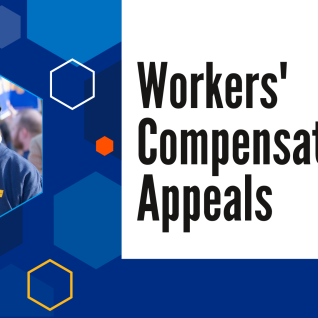Paid Parental Leave
URGENT – Local Information Update Form Needed for 2020
September 25, 2020Federal News Network Covers NVAC’s Fight for Fair Contact
September 30, 2020
- VA Central Office Washington, DC
- August 28, 2020
OFFICE OF THE CHIEF HUMAN CAPITAL OFFICER (OCHCO) BULLETIN
SUBJECT: Paid Parental Leave
This OCHCO Bulletin is to notify Human Resources offices of the Department of Veterans Affairs (VA) policy guidance regarding paid parental leave. In addition, the attachments to this bulletin provide the paid parental leave request form, work obligation agreement, and frequently asked questions. Please share this information with your employee population.
Background. The Federal Employees Paid Leave Act of 2019 (Public Law 116-92; Act) provided a new leave category, referred to as “paid parental leave”. This new leave entitlement is available to any Federal employee who is eligible for Family and Medical Leave Act (FMLA) under Title II and has a qualifying birth or placement on or after October 1, 2020.
The new law amended the FMLA provisions in title 5, United States Code, to provide up to 12 weeks of paid parental leave to covered Federal employees in connection with the birth or placement (for adoption or foster care) of a child occurring on or after October 1, 2020. The Act modified section 6382 in title 5 of the United States Code and subpart L in the Code of Federal Regulations. The Act also added a new subpart to the Code of Federal Regulations (subpart Q).
Paid parental leave is a benefit provided through substitution of unpaid leave under FMLA. VA Handbook 5011, Part III, Chapter 2, paragraph 18, and Chapter 3, paragraph 7d provide that the Office of Personnel Management regulations will be used to implement the FMLA and therefore the provisions of paid parental leave for VA employees.
Eligibility. To be eligible for paid parental leave, an employee must be eligible for leave under the FMLA. Therefore, an employee must meet all FMLA eligibility requirements, including the following:
- Has completed at least 12 months of Federal service (not required to be 12 recent or consecutive months) as –
- an employee, as defined under 5 U.S.C. 6301(2), excluding any service as an employee under 5 CFR 630.1201(b)(2);
- an employee of the Veterans Health Administration appointed under title 38 U.S.C. in occupations listed in 38 U.S.C. 7401(1);
- a “teacher” or an individual holding a “teaching position,” as defined in section 901 of title 20 U.S.C.; or
- an employee identified in section 2105(c) of title 5 U.S.C. who is paid from non- appropriated funds.
- An employee carrying out screening functions who is appointed under section 111(d) of Public Law 107-71 (49 U.S.C. 44935).
- An employee performing covered active duty (as defined in 5 U.S.C. 6381(7)(B)) that interrupts civilian service due to a qualifying call or order for deployment to a foreign country as a member of the National Guard or Reserves, to the extent that such active duty is not already creditable service as an employee listed in the categories above.
- Has a part-time or full‐time work schedule (intermittent work schedule employees not eligible); and
- Has an appointment of more than 1 year in duration (employees with temporary appointments not to exceed 1 year are ineligible)
Note: An employee who is initially ineligible for FMLA at the time of a qualifying birth or placement of a child may later establish FMLA leave eligibility during the 12-month period following the birth or placement and use paid parental leave during that time period. Generally, this circumstance would apply when an employee becomes eligible for FMLA upon completing the required 12 months of service or by changing to a qualifying work schedule or appointment. Once FMLA eligibility is established and FMLA is invoked, an employee may substitute paid parental leave in connection with a qualifying birth or placement within the 12-month period following the birth or placement.
Qualifying Births or Placements. An employee must have a qualifying birth or placement event (i.e. birth or placement for adoption or foster care) of the employee’s child that occurs on or after October 1, 2020. A qualifying birth or placement means the employee has a current parental role in connection with the child whose birth or placement was the basis for granting FMLA unpaid leave.
OPM defines birth as the delivery of a living child. When the term “birth” is used in connection with the use of leave under this subpart before birth, it refers to an anticipated birth.
Placement is defined as a new placement of a son or daughter with an employee for adoption or foster care. This excludes the adoption of a stepchild or a foster child who has already been a member of the employee's household and has an existing parent-child relationship with an adopting parent. When the term “placement” is used in connection with the use of leave under this subpart before placement has occurred, it refers to a planned or anticipated placement.
Leave Entitlement. Paid parental leave may be substituted for any FMLA unpaid leave granted for birth of a son or daughter, or placement of a son or daughter with the employee for adoption or foster care. The amount of paid parental leave that is available for such purposes is 12 administrative workweeks in connection with the birth or placement involved.
Entitlement to paid parental leave is triggered by the occurrence of a birth or placement. Paid parental leave is available as long as an employee has a continuing parental role in connection with the child whose birth or placement was the basis for the leave entitlement. If an employee ceases to provide care for a son or daughter, the employee is no longer eligible for paid parental leave.
Conversion of weeks to hours. For employees who are charged leave on an hourly basis (including fractions of an hour), the 12 administrative workweeks is converted to hours based on the number of hours in the employee's scheduled tour of duty on the date the employee begins a period of using paid parental leave as follows:
(1) For a regular full-time employee with 80 hours in the scheduled tour of duty over a biweekly pay period, the hours equivalent of 12 administrative workweeks is 480 hours.
(2) For a full-time employee with an uncommon tour of duty (firefighters, etc.) the hours equivalent of 12 administrative workweeks is derived by multiplying 6 times the number of hours in the employee's biweekly scheduled tour of duty (or 6 times the average hours if the biweekly tour hours vary over an established cycle
Example: if an employee has an uncommon tour consisting of six 24-hours shifts (144 hours) per biweekly pay period, the amount would be 864 hours.
(3) For a part-time employee, the hours equivalent of 12 administrative workweeks is determined by multiplying 6 times the number of hours in the employee's scheduled tour of duty over a biweekly pay period.
Conversion of weeks to days. For employees charged leave on a da
ily basis, the days equivalent of 12 administrative workweeks must be determined based on the average number of workdays in the employee’s established tour of duty over a biweekly pay period. Example: if an employee had 8 workdays each biweekly pay period, the days equivalent of 12 administrative workweeks would be 48 days.Change in Work Schedule. If an employee changes work schedules during the 12-month period after the date of a given birth or placement, and the employee has not used the full allotment of paid parental leave, the remaining balance of paid parental leave must be recalculated based on the new tour of duty.
Example: a regular full-time employee with a balance of 120 hours of unused paid parental leave converts to a part-time schedule of 20 hours per week. The balance would be recalculated to be 60 hours (40 hours / 80 hours x 120 = 60 hours).
Leave Usage. Paid parental leave may not be used prior to the birth or placement involved even if the employee was granted FMLA unpaid leave for periods prior to the birth or placement event.
Although entitlement is triggered based on the date of birth or placement, the employee may invoke FMLA and substitute paid parental leave at any time during the 12-month period following the qualifying birth or placement event. An employee has a 12-month period beginning on the date of the birth or placement in which to use the 12 administrative workweeks of paid parental leave.
If an employee has any unused balance of paid parental leave that remains at the end of the 12-month period following the birth or placement involved, the entitlement to the unused leave ends at that time. No payment may be made for unused paid parental leave that has expired. Paid parental leave may not be considered annual leave for purposes of making a lump-sum payment for annual leave or for any other purpose.
An employee cannot be required to use annual leave, sick leave, or other paid leave to their credit as a condition to be met before the employee uses paid parental leave.
When an employee requests to use annual leave or sick leave without invoking FMLA unpaid leave, such requests will be subject to management’s discretion on approving or disapproving the timing of when the leave may be used. Note: sick leave is an employee entitlement, therefore an employee generally may not be denied sick leave outside of FMLA for a sick leave purpose as authorized in 5 CFR 630.401.
Documentation of entitlement and employee certification. An employee may be required to provide management with appropriate documentation that shows the employee’s use of paid parental leave is directly connected to a birth or placement that has occurred. Appropriate documentation may include, but is not limited to, a birth certificate or a document from an adoption or foster care agency regarding the placement.
An employee may also be required to sign a form to request paid parental leave, certifying that the paid parental leave is being taken in connection with a birth or placement. In signing the request form, the employee acknowledges an understanding of the consequences of providing a false certification (e.g. the possibility that the agency could pursue disciplinary action, up to and including removal from the Department, or make a referral to a Federal entity that investigates whether conduct constitutes a criminal violation). See Attachment 1 for the paid parental leave request form.
An employee must provide any documentation or forms required by the agency no later than 15 calendar days after the date the documentation or certification is requested. If it is not practicable under the particular circumstances for an employee to respond within the 15-day time frame, despite the employee’s diligent, good faith efforts, the employee must provide the documentation or certification within a reasonable period of time under the circumstances involved, but no later than 30 calendar days after the date of the original request.
Paid parental leave may be granted prior to receipt of any requested documentation or the paid parental leave request form, based on an employee’s communications with a supervisor or management. Under these circumstances, the granting of paid parental leave is considered to be provisional, pending receipt of the requested documentation or certification.
If the employee fails to provide the required documentation or the request form within the specified time period, management may determine the employee is not entitled to paid parental leave. The employee may be allowed to request that an absence be charged to leave without pay, sick leave, annual leave, or other forms of paid time off, as appropriate. If the employee acted fraudulently, management may charge the employee as absent without leave and pursue any other appropriate action.
Work obligation. Prior to using paid parental leave, an employee is required to enter into a written service agreement to work for VA for 12 weeks after the day on which paid parental leave concludes. The work obligation agreement is found in Attachment 2 of this bulletin.
The written agreement may be accepted with the employee’s handwritten signature or an acceptable electronic signature (PIV signature), consistent with the requirements in 5 CFR 850.106. The agreement may also be documented in an email or text message from the employee, as long as the employee furnishes the required signature within 24 hours.
The hours of work which count toward completion of the 12-week work obligation are periods during which the employee is actually in duty status, excluding any periods of paid or unpaid leave, time off (including holiday time off), or other nonduty status such as furlough or AWOL status. Such excluded periods will not count toward completion of the 12-week work obligation. Any period(s) of work during intermittent usage of paid parental leave (i.e., work performed prior to the conclusion of the use of paid parental leave) does not count toward the 12-week work obligation.
An employee who separates from service at the VA before completing the required 12 weeks of work is considered to have failed to return to duty. Note: intra-agency reassignments or transfers without a break in service are not considered a separation.
Conversion of the 12-week obligation to hours and days. Most VA employees are charged leave on an hourly basis (including fractions of an hour). Therefore, the 12-week work obligation is converted to hours based on the number of hours in the employee's scheduled tour of duty.
(1) For a regular full-time employee with 80 hours in the scheduled tour of duty over a biweekly pay period, the hours equivalent of 12 weeks is 480 hours.
(2) For a full-time employee with an uncommon tour of duty, the hours equivalent of 12 weeks is derived by multiplying 6 times the number of hours in the employee's biweekly scheduled tour of duty (or 6 times the average hours if the biweekly tour hours vary over an established cycle). For example, if an employee has an uncommon tour consisting of six 24- hours shifts (144 hours) per biweekly pay period, the amount would be 864 hours.
(3) For a part-time employee, the hours equivalent of 12 weeks is derived by multiplying 6 times the number of hours in the employee's scheduled tour of duty over a biweekly pay period. For example, if an employee has a part-time scheduled tour of duty that consists of 40 hours in a biweekly pay period, the amount would be 240 hours.
If an employee's scheduled tour of duty changes before the employee completes the 12-week obligation, the agency must recalculate the balance of work hours owed, taking the remaining balance of paid parental leave and recalculating based on the change in the number of average hours in the employee's scheduled tour of duty.
Example: if a regular full-time employee has a balance of 120 work hours left towards completion of the a 12-week requirement and then converts to a part-time schedule of 20 hours per week, the remaining work hours requirement would be recalculated to be 60 hours. (Since the old schedule was 80 hours biweekly or an average of 40 hours weekly, the new part-time tour is half of the former full-time tour. 40/80 times 120 equals 60.)
For employees who are charged leave on a daily basis, the days equivalent of 12 weeks is derived based on the average number of workdays in the employee's established tour of duty over a biweekly pay period. For example, if an employee had 8 workdays each biweekly pay period, the days equivalent of 12 weeks would be 48 days.
Reimbursement Requirement. If an employee fails to return for the required 12 weeks of work after the paid parental leave concludes, the employee is required to make a reimbursement equal to the total amount of any Government contributions paid by the agency on behalf of the employee to maintain the employee's health insurance coverage under the Federal Employees Health Benefits Program during the period(s) when paid parental leave was used.
The reimbursement requirement may only be waived when the employee furnishes medical certification from a health care provider demonstrating the employee is unable to return to work for the required 12 weeks due to either of the following circumstances:
a) The continuation, recurrence, or onset of a serious health condition (including mental health) of the employee or child whose birth or placement was the basis for the paid parental leave. In the case of the employee’s serious health condition, this exception applies only if the condition is related to the applicable birth or placement; or
b) Any other circumstance beyond the employee’s control that truly preclude an employee from returning to work. Example: when a parent chooses to stay home because a child has a serious health condition, or an employee moves because the employee's spouse is unexpectedly transferred to a job location more than 75 miles from the employee's worksite. However, a situation where an employee chooses not to return to work to stay home with a well, newborn child would not constitute a circumstance beyond the employee's control for purposes of this exception.
In cases where the agency’s determination regarding whether to apply the reimbursement required relies on a health condition that is not related to the applicable birth or placement or that applies to a person other than the employee or the child whose birth or placement was the basis for the paid parental leave, the employee may also be required to furnish a medical certification.
Additional examinations and certification from other health care providers may be required if management deems it necessary, but any such additional examinations are performed at the agency's expense.
Multiple agencies involved. If an employee does not complete the 12-week work obligation and if more than one agency provided Government contributions on behalf of an employee for that employee's health insurance coverage during a period of paid parental leave, each agency is responsible for making a determination regarding whether to apply the reimbursement requirement described with respect to periods of paid parental leave during employment with the agency. The agency that employed the employee at the time use of paid parental leave concluded is responsible for informing any other affected agency of the employee's failure to complete the required 12 weeks of work and of its determination regarding application of the reimbursement requirement. Any other affected agency will make its own determination regarding application of the reimbursement requirement associated with agency employment.
The reimbursement is subject to collection as a debt owed to the affected agency (see Federal Claims Collection Standards under 31 CFR parts 900 – 904).
Retroactive election by a previously incapacitated employee. When management determines that an otherwise eligible employee could have made an election during a past period to substitute paid parental leave and enter into a work obligation agreement, but was physically or mentally incapable of doing so during that past period, the employee may (within 5 workdays of their return to duty) make a retroactive election to substitute paid parental leave for FMLA unpaid leave.
Such a retroactive election shall be effective on the date that such an election would have been made effective, if the employee had not been incapacitated at the time. This retroactive election must be made in conjunction with a retroactive FMLA election under §630.1203(b), if the FMLA unpaid leave was not already approved. As part of this election, the employee must agree (in writing) to meet the 12-week work obligation or pay the required reimbursement, unless application of the work obligation and the associated reimbursement requirement is barred due to continuation, recurrence, or onset of a serious health condition of the employee or child whose birth or placement was the basis for the paid parental leave, or any other circumstance beyond the employee’s control (see ”Reimbursement Requirement” above).
Election by a personal representative on behalf of an incapacitated employee. When management determines that an otherwise eligible employee is physically or mentally incapable of making an election to substitute paid parental leave, and entering into a work obligation agreement, conditional approval of substitution of paid parental leave for applicable FMLA unpaid leave will be granted on a prospective (current) basis upon the request of a personal representative of the employee whom the agency finds acceptable. Conditional approval is based on the presumption that the employee would have entered into the work obligation agreement if the employee had not been incapacitated.
Within 5 workdays after returning to work, the employee must enter into a written agreement to meet the work obligation or pay the required reimbursement, unless application of the work obligation and the associated reimbursement requirement is barred due to continuation, recurrence, or onset of a serious health condition of the employee or child whose birth or placement was the basis for the paid parental leave, or any other circumstance beyond the employee’s control (see “Reimbursement Requirement” above).
If the employee declines to enter into the written service agreement after being determined to no longer be incapacitated, the portion of the 12 weeks of paid parental leave that has not been exhausted will be cancelled and any paid parental leave that was used based on the conditional approval will be invalid. The time covered by the invalidated paid parental leave must be converted to leave without pay unless the employee requests that other paid leave or paid time off to the employee's credit be applied (as appropriate) in place of the invalidated paid parental leave. To the extent the employee has invalidated paid parental leave hours not replaced by other paid leave or paid time off, pay received for those hours is a debt to the employing agency and is subject to collection under the Federal Claims Collection Standards in 31 CFR parts 900 through 904.
Other FMLA Use
Use of FMLA for purposes other than birth or placement of a child during a 12-month FMLA period may reduce the amount of FMLA leave available for birth or placement purposes. To the extent available FMLA leave is reduced, paid parental leave may also be reduced. However, if an employee invokes FMLA during the 12-month period prior to the birth or placement, the employee may again invoke FMLA for the birth or placement when the previous FMLA period expires. The employee will then have access to a new 12-week FMLA entitlement and the remaining weeks of paid parental leave (not to exceed 12 weeks of paid parental leave). The new 12-week FMLA entitlement expires 12 months following the date of birth or placement.
Special note: Although paid parental leave is limited to 12 administrative workweeks for each birth or placement event, under the unpaid FMLA entitlement an employee may choose to substitute annual leave, sick leave, advanced leave, or donated leave for the remaining weeks of unpaid FMLA. Under the new substitution rules for FMLA, sick leave may be substituted without regard to the normal limitations on the use of sick leave (i.e., sick leave may be used for bonding).
If an employee has multiple children born or placed on the same day, the multiple childbirth/placement event is considered to be a single event that initiates a single entitlement of up to 12 weeks of paid parental leave.
Multiple children born or placed during the 12-month period following the date of an earlier birth or placement of a child will generate a new 12-week leave entitlement to be used in the 12-month period following the birth/placement. However, any use of paid parental leave during an overlap period will count toward the 12-week limit for each birth/placement involved.
Questions regarding this bulletin may be referred to Worklife and Benefits Service at [email protected].
Issued by: VA/OCHCO/Worklife and Benefits Service
Attachment 1 – Paid Parental Leave Request Form
Attachment 2 – Agreement to Complete 12-Week Work Obligation Attachment 3 – Frequently Asked Questions on Paid Parental Leave
This content is restricted to site members. If you are an existing user, please log in. New users may register below.
Share via:






